Click here and press the right key for the next slide.
(This may not work on mobile or ipad. You can try using chrome or firefox, but even that may fail. Sorry.)
also ...
Press the left key to go backwards (or swipe right)
Press n to toggle whether notes are shown (or add '?notes' to the url before the #)
Press m or double tap to slide thumbnails (menu)
Press ? at any time to show the keyboard shortcuts
Liberals vs Conservatives
Question
Do cultural differences in moral psychology explain political conflict on climate change?
Plan:
Work through Feinberg & Willer, 2013 ‘The Moral Roots of Environmental Attitudes’
cultural variation in ethical foundations: context

How are social liberalism and conservatism measured?
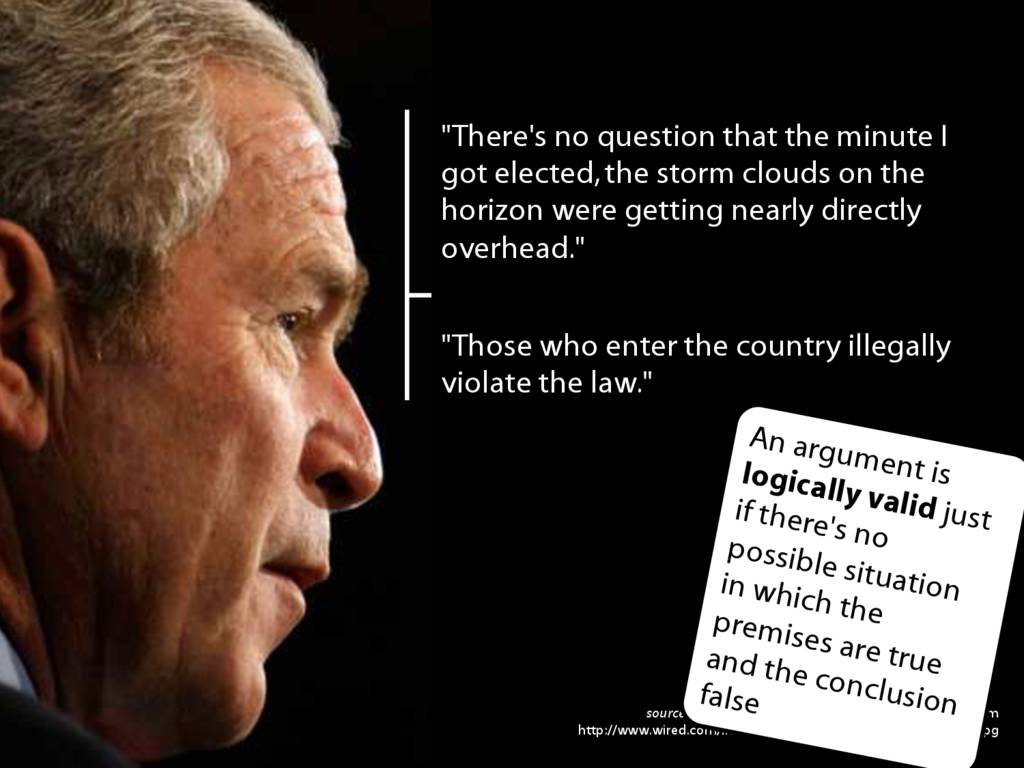
How are social liberalism and conservatism measured?
How much in favour of ...
1 capital punishment
2 making abortion illegal
3 less strict gun control
4 more socialized health care
5 legalization of same sex marriage
6 not punishing illegal immigration
7 democrats
8 republicans
... are you
(Wolsko, 2017)

Feinberg & Willer (2015)
start of lecture
Question
Do cultural differences in moral psychology explain political conflict on climate change?
Plan:
Work through Feinberg & Willer, 2013 ‘The Moral Roots of Environmental Attitudes’
The story so far ...
1. ‘Moral convictions and the emotions they evoke shape political attitudes’
2. There are at least two foundational domains of human morality, including harm and purity.
3. ‘liberals and conservatives possess different moral profiles’
‘believers [in climate change] are more likely than skeptics to report that they intend to behave in climate-friendly ways (r = .32) but on actual behaviors the difference is modest (r = .17).’
In other words, knowing whether people are skeptics or believers tells you surprisingly little about their willingness to engage in actions that matter’
‘For example, the difference between believers and skeptics in terms of their willingness to put a price on carbon is relatively small (r = .20)’
(Hornsey & Fielding, 2020, p. 21).

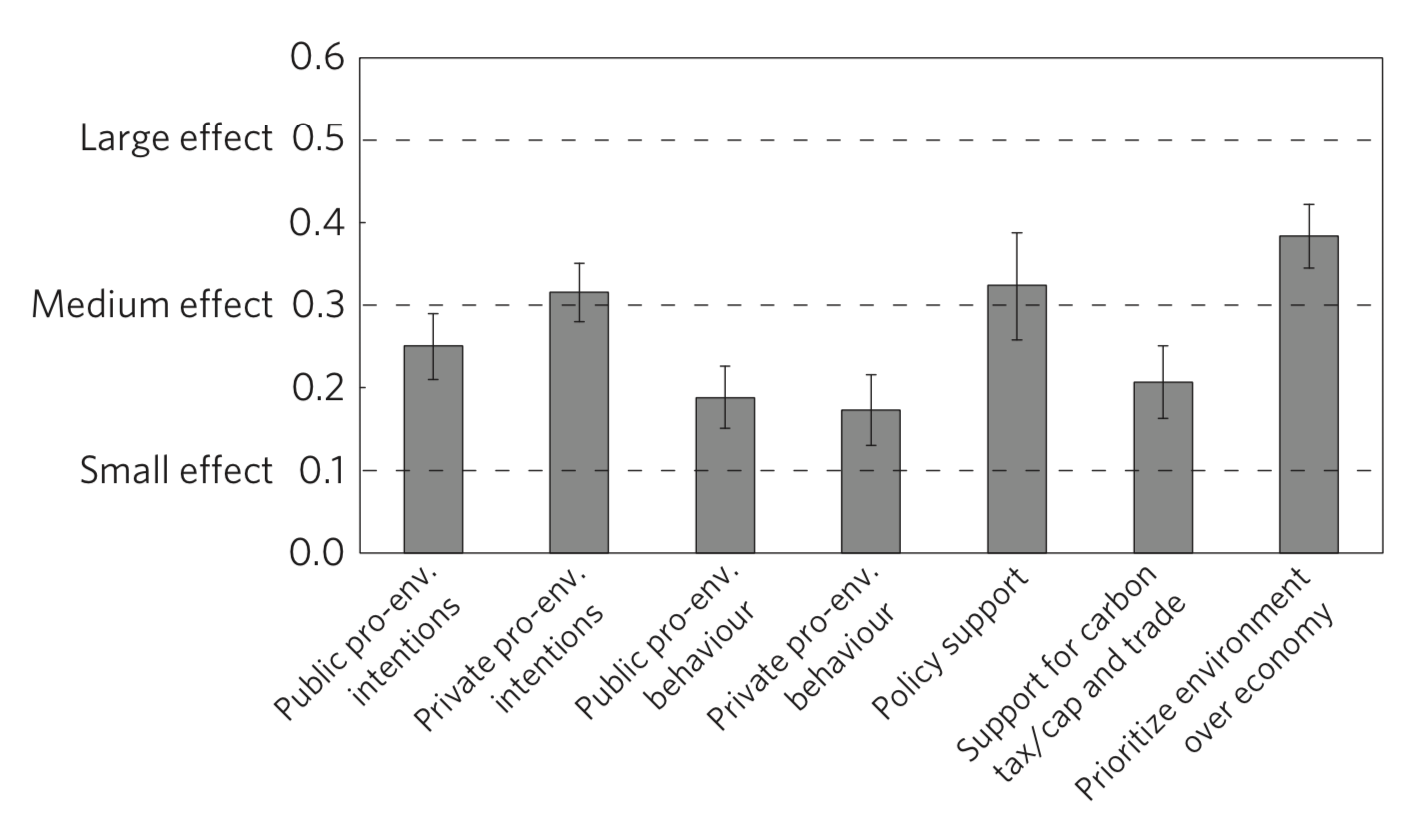
Hornsey, Harris, Bain, & Fielding (2016, p. figure 3)

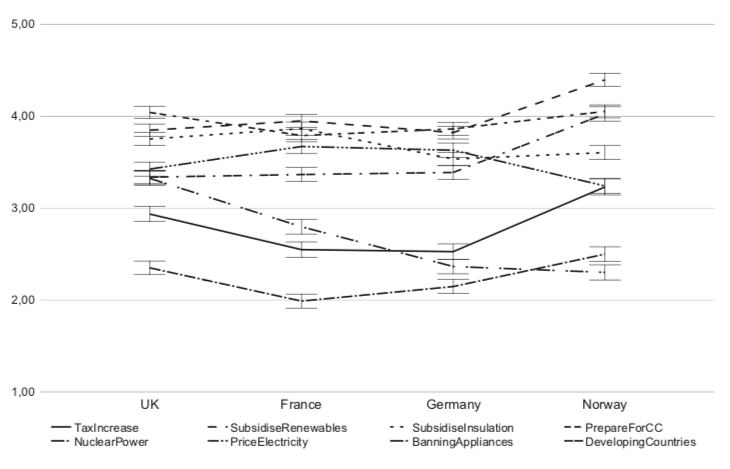
Doran, Böhm, Pfister, Steentjes, & Pidgeon (2019, p. figure 3)
‘moral concerns turned out to be substantially more important than consequence evaluations, explaining about twice as much of the variance.’
The story so far ...
1. ‘Moral convictions and the emotions they evoke shape political attitudes’
2. There are at least two foundational domains of human morality, including harm and purity.
3. ‘liberals and conservatives possess different moral profiles’

3
‘liberals and conservatives possess different moral profiles regarding the five moral foundations’
Feinberg & Willer (2013, p. 2)

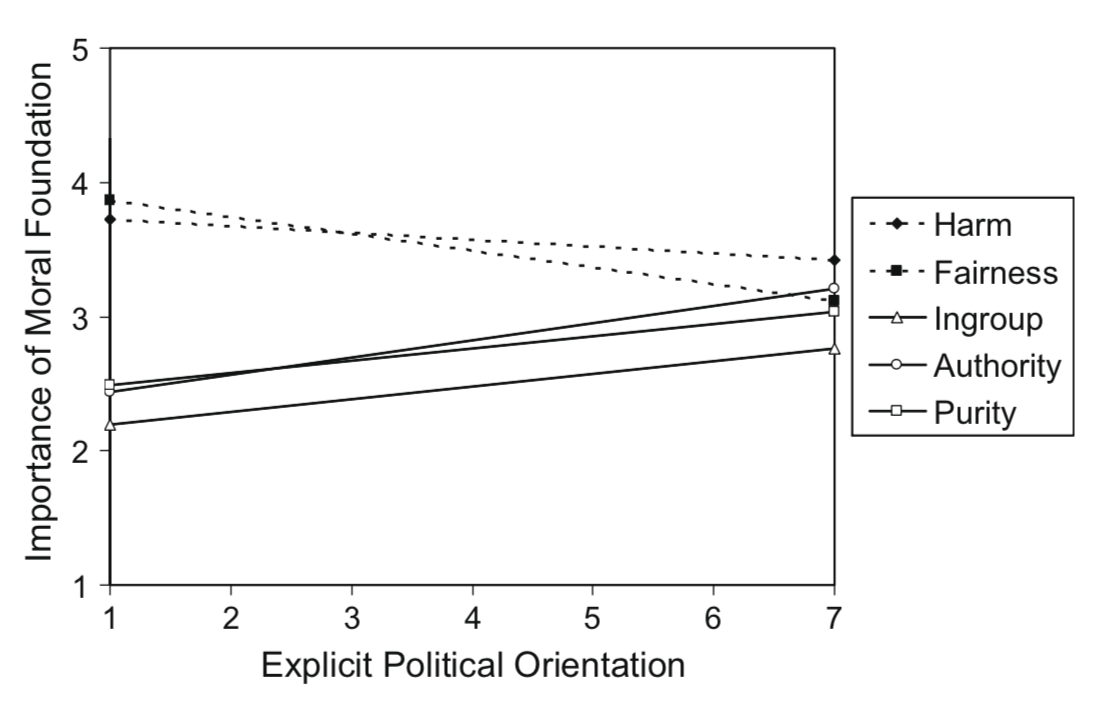

van Leeuwen & Park (2009, p. figure 1a)

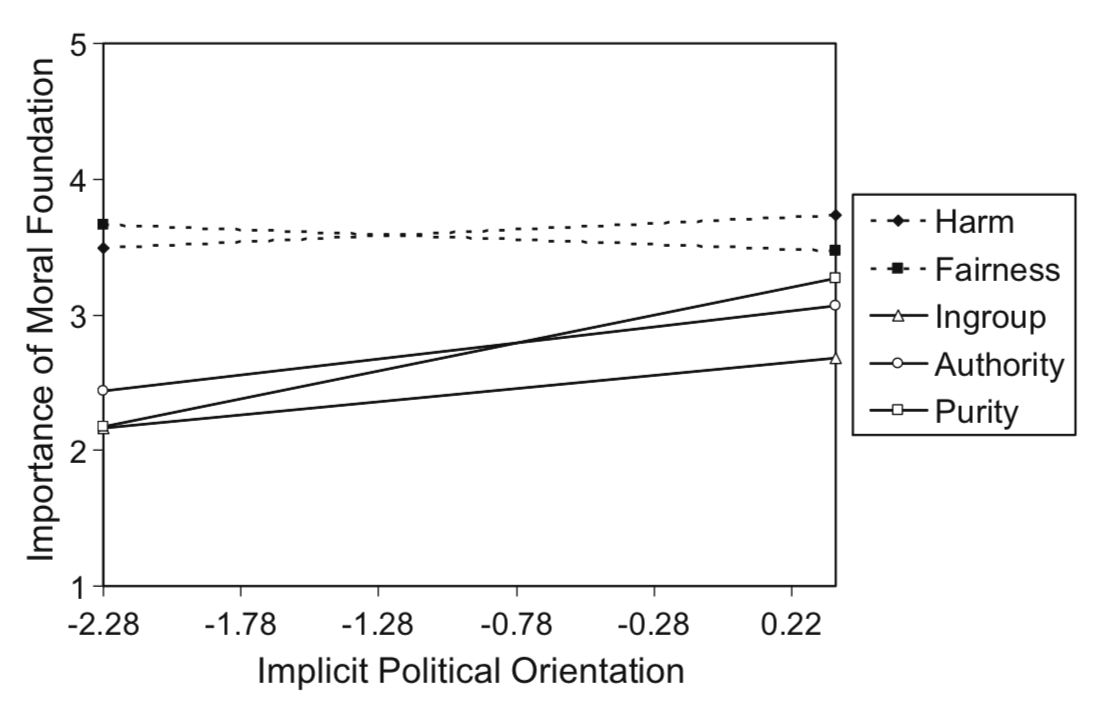

van Leeuwen & Park (2009, p. figure 1b)

Exceptions
New Zealand: Harm and Fairness not linked to socially conservative/liberal (Davies, Sibley, & Liu, 2014)
‘Latvia is the only country [...] with a positive care-conservatism, and negative right-authority and right-sanctity associations.’
(Kivikangas, Fernández-Castilla, Järvelä, Ravaja, & Lönnqvist, 2021, p. 71)
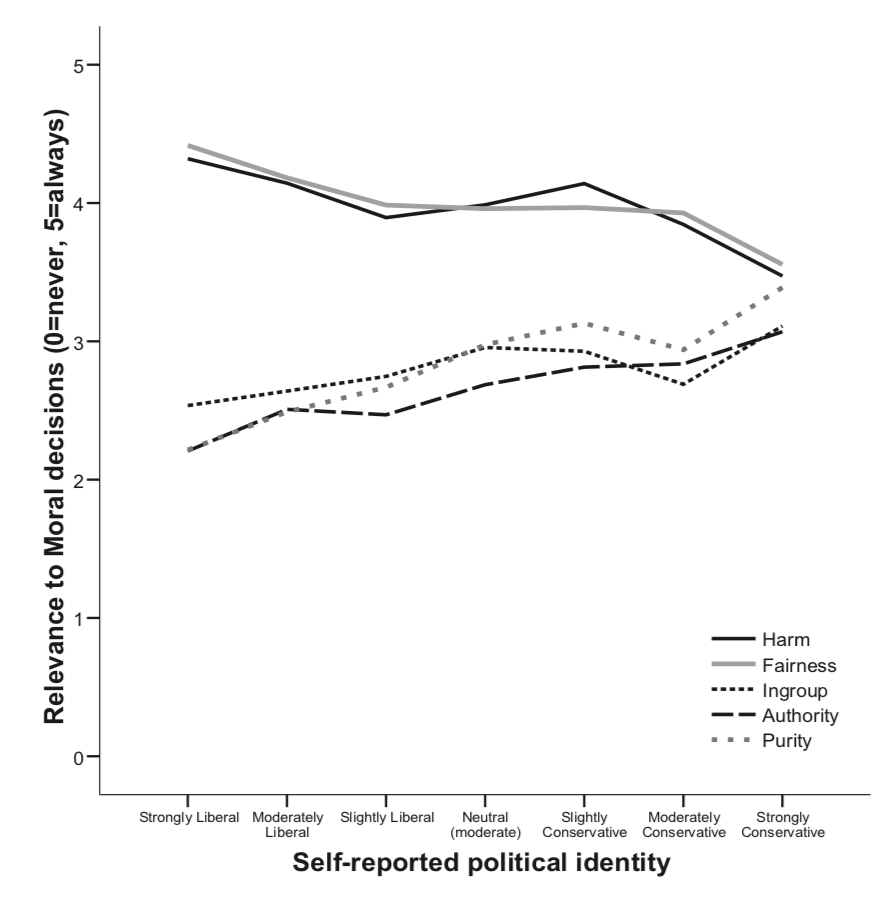
Graham, Haidt, & Nosek (2009, p. figure~1)
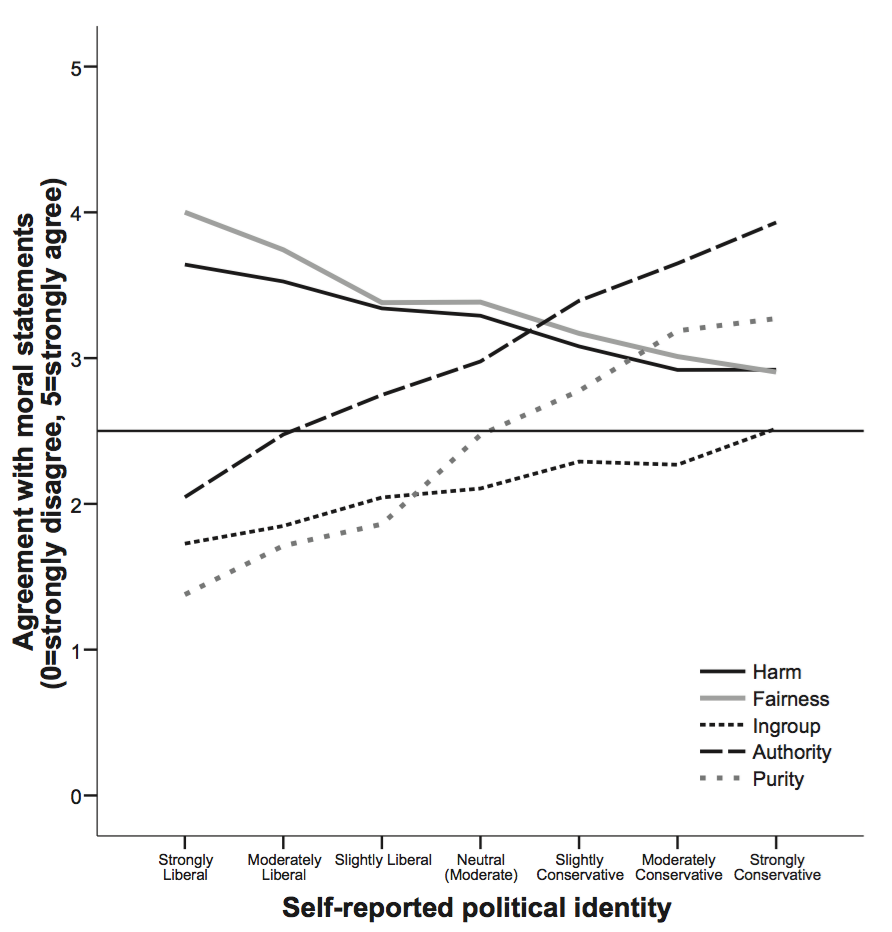
Graham et al. (2009, p. figure~3)
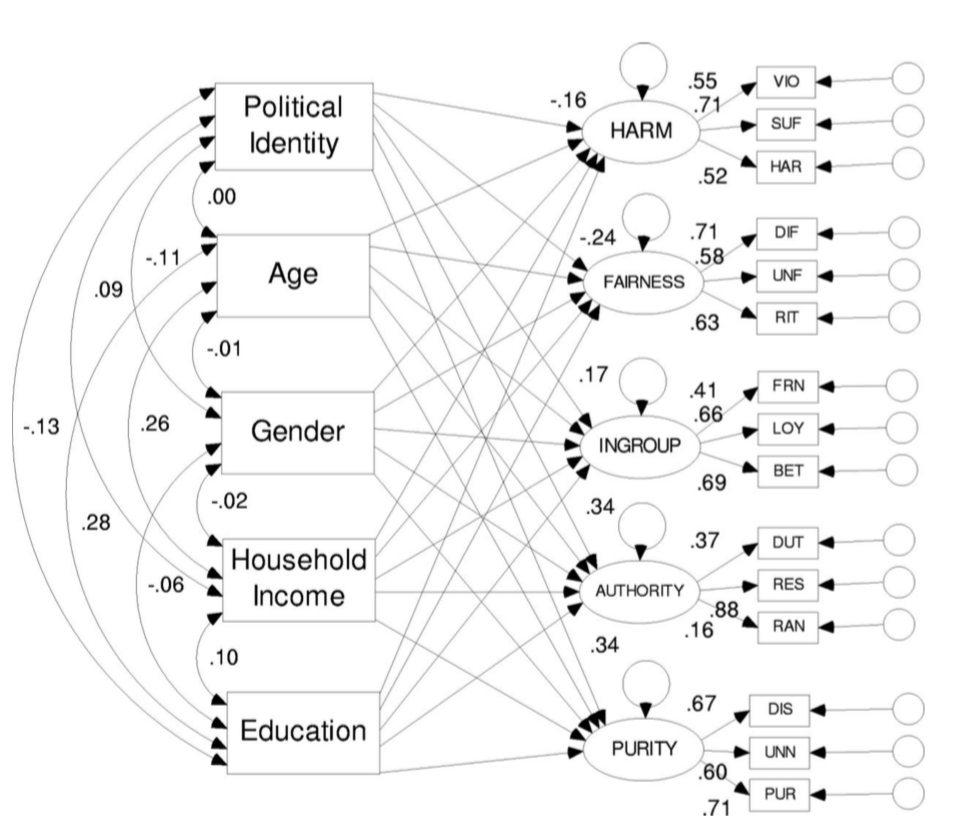
Graham et al, 2009 figure 2
invariance ?!
MFQ-2 : from 2023 (Atari et al., 2023; Dogruyol et al., 2024)
MFQ-1: from 2007 (Haidt & Graham, 2007)
Davis et al. (2016): no scalar invariance for Black people vs White people
Atari, Graham, & Dehghani (2020): scalar non-invariance for US vs Iranian participants
Doğruyol, Alper, & Yilmaz (2019): metric non-invariance for WEIRD/non-WEIRD samples
Nilsson (2023): non-invariance for class within Sweeden
Iurino & Saucier (2020): problems with fit
We found
care and equality
to be
negatively correlated with political conservatism,
while
proportionality, loyalty, authority, and purity
were positively associated with
right-wing ideology.
(Atari et al., 2023, p. 1171)

Graham et al, 2009 figure 2
invariance ?!
metanalysis
‘care and fairness are generally negatively, and loyalty, authority, and sanctity, generally positively related to conservative political orientation’
(Kivikangas et al., 2021, p. 77)
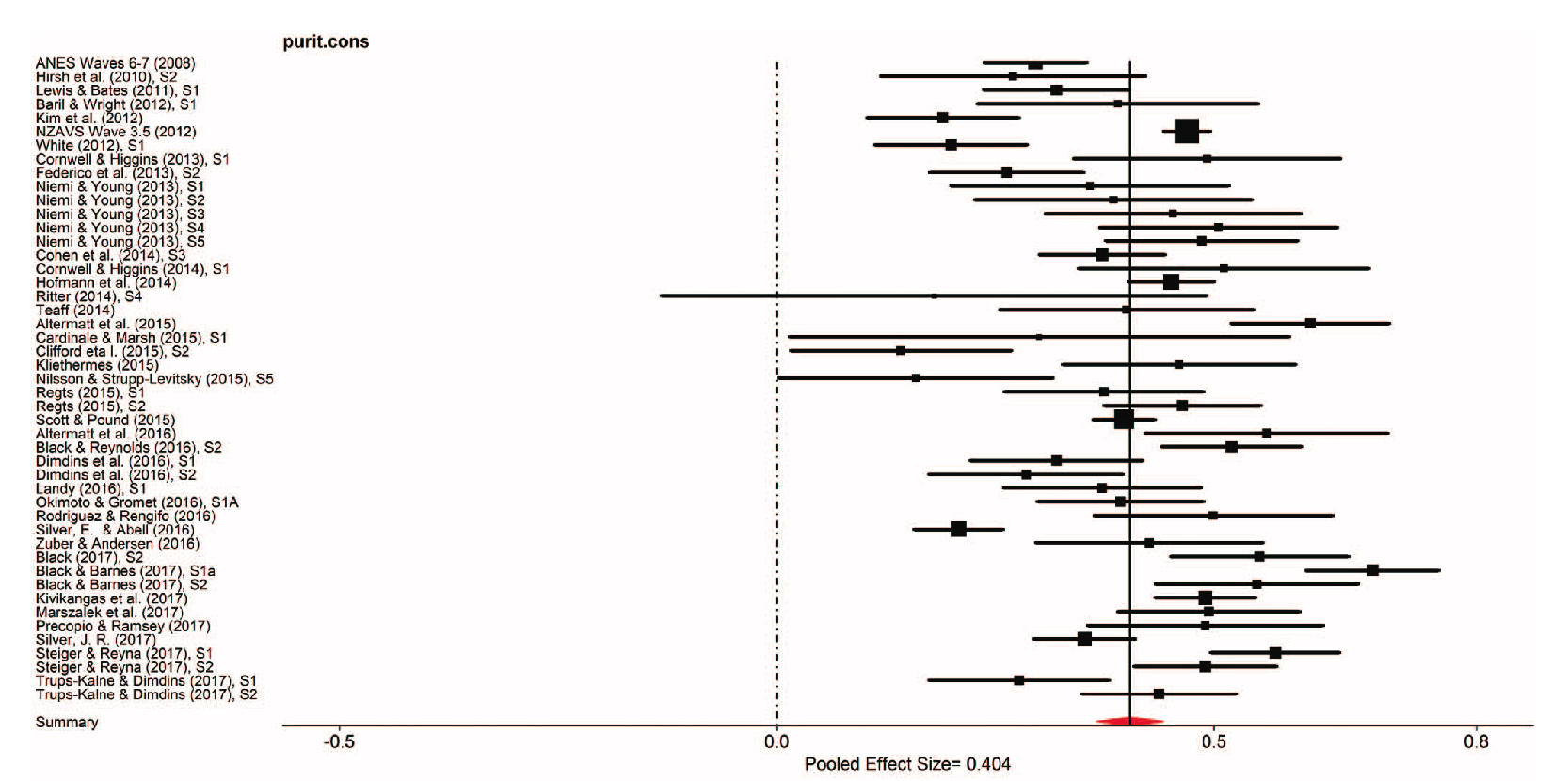
example:
purity
(Kivikangas et al., 2021, p. figure 6 (part))

Graham et al, 2009 figure 2
invariance ?!



Graham et al. (2009, p. figure~3)
3
‘liberals and conservatives possess different moral profiles regarding the five moral foundations’
Feinberg & Willer (2013, p. 2)